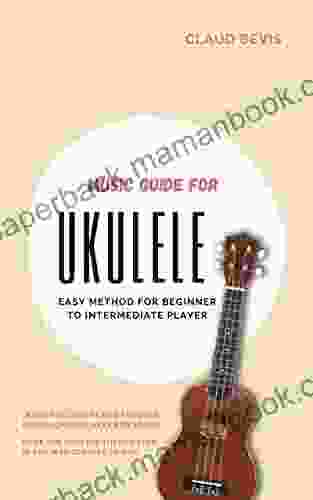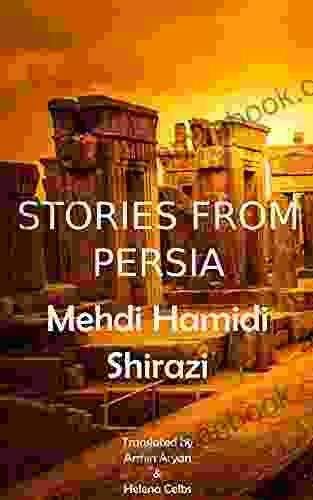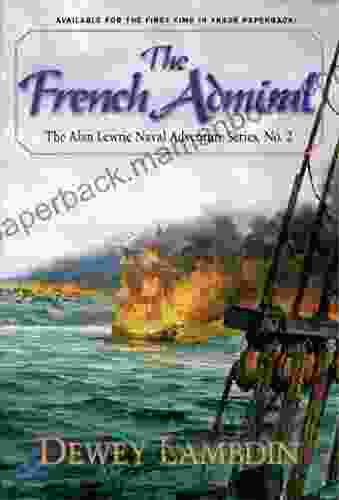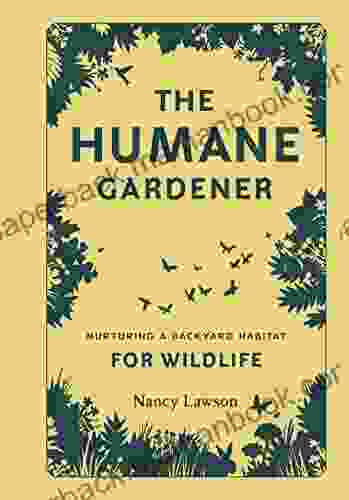Nurturing a Backyard Habitat for Wildlife: A Comprehensive Guide for Wildlife Enthusiasts

In the realm of nature, backyards serve as miniature havens, offering refuge and sustenance to a diverse array of wildlife. Creating a backyard habitat for wildlife is not merely an act of kindness; it's an investment in the health and well-being of our communities and planet. By providing food, water, cover, and nesting sites, we can attract and support myriad species, from birds and butterflies to bees and small mammals.
Understanding Your Yard's Ecosystem
Before embarking on the journey of creating a wildlife habitat, it's crucial to understand the existing ecosystem in your backyard. Conduct a thorough survey of the plants, trees, and other features that make up your landscape. Observe the types of wildlife that frequent your yard and note their habits. This assessment will provide valuable insights for tailoring your habitat to the specific needs of local species.
4.7 out of 5
| Language | : | English |
| File size | : | 16778 KB |
| Text-to-Speech | : | Enabled |
| Screen Reader | : | Supported |
| Enhanced typesetting | : | Enabled |
| X-Ray | : | Enabled |
| Print length | : | 225 pages |
| Lending | : | Enabled |
Essential Elements of a Wildlife Habitat
Every wildlife habitat requires four fundamental elements:
- Food: Provide a variety of food sources, such as nectar-rich flowers, fruit-bearing shrubs, and bird feeders. Adapt your choices to the specific diets of the species you wish to attract.
- Water: Create a reliable water source, such as a birdbath, pond, or water bowl. Ensure it's shallow enough for small creatures to access and provide fresh water regularly.
- Nesting Sites: Offer nesting sites such as birdhouses, bat boxes, or piles of loose bark to provide a safe environment for wildlife to raise their young.
li>Cover: Provide ample cover, including dense shrubs, brush piles, or nesting boxes, to offer shelter from predators, inclement weather, and sun exposure.
Landscaping for Wildlife
Your landscaping choices can profoundly impact the appeal and functionality of your backyard habitat. Consider planting native plants that are well-suited to your region and climate. Native plants provide food and cover tailored to local wildlife species and support a healthy ecosystem.
Incorporate a variety of plant types, including trees, shrubs, flowers, and ground cover, to create a diverse and layered habitat. Avoid using pesticides and herbicides, as these chemicals can harm wildlife and disrupt the ecological balance.
Creating a Wildlife Pond
A backyard pond is a magnet for wildlife, providing a drinking and bathing spot, a breeding ground for amphibians, and a haven for insects and other small creatures. When designing your pond, consider its depth, shape, and location to ensure it meets the needs of the species you wish to attract.
Line your pond with a pond liner and add aquatic plants, rocks, and logs to provide shelter and food sources. Install a small pump or fountain to keep the water oxygenated and circulating.
Providing Other Amenities
Beyond the essential elements, there are additional amenities that can enhance the appeal of your wildlife habitat:
- Insect Hotel: Create a home for beneficial insects by building an insect hotel. Fill it with natural materials such as wood, bamboo, and leaves to provide shelter for solitary bees, lacewings, and other beneficial species.
- Hummingbird Feeder: Attract hummingbirds with a sugar-water feeder. Use a 1:4 ratio of sugar to water and clean the feeder regularly to prevent bacterial growth.
- Fairy Garden: Create a miniature fairy garden with small plants, figurines, and a water feature to provide habitat for tiny creatures like fairies (figuratively speaking).
Maintenance and Observation
Maintaining your wildlife habitat is crucial for its longevity and effectiveness. Regularly clean bird feeders and birdbaths, replenish water sources, and remove any debris that may accumulate.
Take time to observe the wildlife that visits your habitat. Note their behavior, identify different species, and make adjustments as needed to enhance their experience. Gardening for wildlife is an ongoing journey of learning, adjustment, and appreciation.
Nurturing a backyard habitat for wildlife is a rewarding endeavor that enriches both nature and our own lives. By providing food, water, cover, and nesting sites, we can create a sanctuary for countless creatures and foster a symbiotic relationship between humans and the natural world.
Let your backyard become a vibrant haven where wildlife can thrive, and you can experience the wonders of nature firsthand. As you witness the diversity and abundance of life attracted to your habitat, you'll discover that the true beauty lies not just in the landscape but in the connections you forge with the creatures who share it.
Alt attribute for the main image: A vibrant backyard habitat filled with wildflowers, water features, bird feeders, and nesting boxes, providing a haven for a wide variety of wildlife.
4.7 out of 5
| Language | : | English |
| File size | : | 16778 KB |
| Text-to-Speech | : | Enabled |
| Screen Reader | : | Supported |
| Enhanced typesetting | : | Enabled |
| X-Ray | : | Enabled |
| Print length | : | 225 pages |
| Lending | : | Enabled |
Do you want to contribute by writing guest posts on this blog?
Please contact us and send us a resume of previous articles that you have written.
 Top Book
Top Book Novel
Novel Fiction
Fiction Nonfiction
Nonfiction Literature
Literature Paperback
Paperback Hardcover
Hardcover E-book
E-book Audiobook
Audiobook Bestseller
Bestseller Classic
Classic Mystery
Mystery Thriller
Thriller Romance
Romance Fantasy
Fantasy Science Fiction
Science Fiction Biography
Biography Memoir
Memoir Autobiography
Autobiography Poetry
Poetry Drama
Drama Historical Fiction
Historical Fiction Self-help
Self-help Young Adult
Young Adult Childrens Books
Childrens Books Graphic Novel
Graphic Novel Anthology
Anthology Series
Series Encyclopedia
Encyclopedia Reference
Reference Guidebook
Guidebook Textbook
Textbook Workbook
Workbook Journal
Journal Diary
Diary Manuscript
Manuscript Folio
Folio Pulp Fiction
Pulp Fiction Short Stories
Short Stories Fairy Tales
Fairy Tales Fables
Fables Mythology
Mythology Philosophy
Philosophy Religion
Religion Spirituality
Spirituality Essays
Essays Critique
Critique Commentary
Commentary Glossary
Glossary Bibliography
Bibliography Index
Index Table of Contents
Table of Contents Preface
Preface Introduction
Introduction Foreword
Foreword Afterword
Afterword Appendices
Appendices Annotations
Annotations Footnotes
Footnotes Epilogue
Epilogue Prologue
Prologue Doug Mchugh
Doug Mchugh Janette K Klingner
Janette K Klingner Emile Zola
Emile Zola Jo Beverley
Jo Beverley Lope De Vega
Lope De Vega Tony Horwitz
Tony Horwitz Kiki Prottsman
Kiki Prottsman Robert Vitelli
Robert Vitelli Richard D Parsons
Richard D Parsons Erik E Hanberg
Erik E Hanberg Henry William Herbert
Henry William Herbert John Boyne
John Boyne Hannah Shield
Hannah Shield Scott Sigler
Scott Sigler Rui Zhi Dong
Rui Zhi Dong James D Shipman
James D Shipman Sheri Fink
Sheri Fink Kenjiro Hata
Kenjiro Hata Samuel Marquis
Samuel Marquis Kay Dew Shostak
Kay Dew Shostak
Light bulbAdvertise smarter! Our strategic ad space ensures maximum exposure. Reserve your spot today!

 Adrian WardUltimate Guide for Beginners and Intermediate Tennis Players: Mastering the...
Adrian WardUltimate Guide for Beginners and Intermediate Tennis Players: Mastering the...
 Chase SimmonsThe Bright and Dark Side of Social Media: Embracing the Light and Mitigating...
Chase SimmonsThe Bright and Dark Side of Social Media: Embracing the Light and Mitigating...
 Cameron ReedAn Anthology of Persian Short Fiction: A Journey into the Heart of Iranian...
Cameron ReedAn Anthology of Persian Short Fiction: A Journey into the Heart of Iranian... Melvin BlairFollow ·17k
Melvin BlairFollow ·17k Adrian WardFollow ·12.3k
Adrian WardFollow ·12.3k James GrayFollow ·12.2k
James GrayFollow ·12.2k Ralph TurnerFollow ·2k
Ralph TurnerFollow ·2k Joseph FosterFollow ·3.8k
Joseph FosterFollow ·3.8k Colin RichardsonFollow ·19k
Colin RichardsonFollow ·19k Trevor BellFollow ·6.7k
Trevor BellFollow ·6.7k Gene SimmonsFollow ·5.4k
Gene SimmonsFollow ·5.4k

 Jeremy Mitchell
Jeremy MitchellPlay We Now On Christmas Violin Christmas: A Heartfelt...
Play We Now On...

 Terry Bell
Terry BellTales from the Road: Confessions of an Atlanta Uber...
In the vibrant...

 Ervin Bell
Ervin BellThe French Admiral: A Gripping Naval Adventure with Alan...
In the vast expanse of...

 Henry David Thoreau
Henry David ThoreauCrochet Cozy Afghan Patterns: Crochet Weekend Afghan...
to Crochet...

 Orson Scott Card
Orson Scott CardAn Archaeological View Of The Industrialization Of North...
The industrialization of North America was a...

 Josh Carter
Josh CarterClipboard Christmas Skits by Tom Spence: A Festive...
A Christmas...
4.7 out of 5
| Language | : | English |
| File size | : | 16778 KB |
| Text-to-Speech | : | Enabled |
| Screen Reader | : | Supported |
| Enhanced typesetting | : | Enabled |
| X-Ray | : | Enabled |
| Print length | : | 225 pages |
| Lending | : | Enabled |






